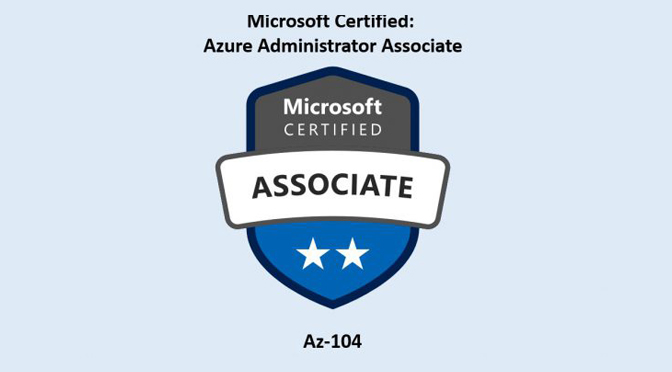Project 1:
Problem: Implementing a new architecture to the company’s website based on the requirements given for application gateway, storage accounts and configuring traffic manager for the
same
Topics covered:
- Azure gateway
- Azure storage accounts
- Traffic manager
- Azure networking
- Azure blob storage
- Azure containers
Project highlights:
- Working and configuring application gateway
- Configuring storage account to technical specifications
- Working with blob storage
- Vnet-vnet peering
- Distributing traffic across different regions
Project 2: building a dashboard to monitor your company’s website which is running on a web app.
Topics covered:
- Azure metrics
- Log analytics
- Application insights
- Alerts and actions
- Azure monitor
Project highlights:
- Visually correlating trends among various metrics
- investigate spikes and dips in metric values.
- Creating a common dashboard for various metrics
- Raising alerts and performing relevant actions on specified conditions
Case Study 01: Introduction to Cloud computing
Problem Statement: Solving the issue of not wanting the corporation’s confidential data on the cloud while migrating to Microsoft Azure
Topics: Azure Resource manager, Azure subscriptions
Highlights:
1.1 Govern all resources separately
1.2 Tracking cost and billing of each service being used separately
1.3 Accessing and managing resource groups
Case Study 02: Microsoft Azure Storage
Problem Statement: Solving latency issues and difficulty accessing common files and tools
Topics: Azure storage account, Azure file share, CDN endpoint
Highlights:
2.1 Uploading static content to azure storage
2.2 Creating and configuring a CDN Endpoint to serve the static files that have
been uploaded
2.3 Creating an azure file share and uploading content in it
2.4 Connecting a Linux and Windows server to the File share
Case Study 03: Azure Virtual Machines
Problem Statement: Managing scaling requirements using scale sets and using custom image to create a Virtual machine
Topics: Virtual Machines, Custom images
Highlights:
3.1 Automating the scaling of Virtual Machines as required
3.2 Deploying multiple identical VMs using custom VM image
Case Study 04: Microsoft Azure networking
Problem Statement: Deploy a virtual network with multiple subnets in it and enable the resources within them to communicate privately
Topics: Virtual network, Vnet peering
Highlights:
4.1 Creating a Vnet with subnets and deploying Virtual Machines in it
4.2 Establishing a connection between these subnets
Case Study 05: Load balancing and Network watcher
Problem Statement: Setting up a load balancer and a network watcher in Azure portal
Topics: Azure load balancer, Network performance monitor
Highlights:
5.1 Deploying a load balancer for the backend resources such that a single frontend IP is exposed and all the web servers can be accessed from it
5.2 Setting up a Network performance manager to generate alerts
Case Study 06: Access management in Azure
Problem Statement: Providing access to some of the services managed by your organization’s active directory
Topics: Azure Active Directory, Azure Multi-Factor Authentication
Highlights:
6.1 Adding users in active directory and giving them access
6.2 Creating users in custom active directory domain and giving them access
6.3 Setting up a password authentication method
6.4 Setting up MFA with a verification option


